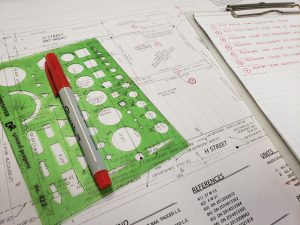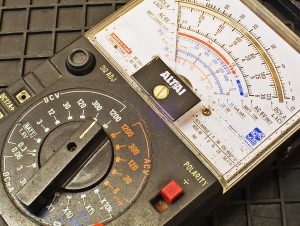Your batteries live in the world of DC (direct current), but most of your favorite household appliances live in the world of AC (alternating current). The inverter is the magical middleman that bridges the gap. Without it, you’d be stuck charging phones, running fans, and powering a fridge—but forget about coffee makers, laptops, or that glorious hair dryer.
How an Inverter Works
At its core, an inverter takes the steady DC voltage from your batteries and “inverts” it into AC by rapidly switching the current back and forth. The end product is an alternating waveform that looks (hopefully) a lot like the electricity from your wall outlet at home.
The “look” of that waveform is what separates cheap inverters from quality ones:
-
Modified sine wave: The budget option. Instead of a smooth curve, it delivers a choppy approximation of AC power. Great for simple devices like lights or heaters, but bad news for sensitive electronics—laptops, TVs, and certain appliances may buzz, overheat, or refuse to run.
-
Pure sine wave: The real deal. It produces clean, smooth AC power that’s indistinguishable from the grid. This is what you want if you’re running anything electronic or delicate. It costs more, but so does replacing fried gear.
Types of Inverter Systems
When you’re building your setup, you’ll have a few ways to integrate an inverter:
Standalone Inverter
This is the simplest setup: a dedicated inverter that just converts DC to AC. You wire it directly to your battery bank and plug appliances into it. Perfect for smaller systems where you only need occasional AC power.
Inverter/Charger Combo
These do double duty. They not only invert DC to AC but also act as a battery charger when you’re connected to shore power or a generator. This makes life easier for full-timers who move between boondocking and campgrounds. One box, two jobs.
Hybrid Inverter Systems
These are more advanced beasts often used in larger setups (and houses). They can juggle solar, batteries, and shore/generator power, prioritizing whichever source is most efficient. For trailers and campers, it’s probably overkill—unless you’re basically running a tiny house on wheels.
All-in-One Power Stations
If you go the all-in-one route, the inverter’s already built into the unit. Brands like Bluetti and EcoFlow often include pure sine inverters rated anywhere from 600W to 5,000W continuous output. They’re dead simple: just plug in your coffee maker and go. The only downside is you’re limited by whatever size inverter is inside that box.
Sizing Your Inverter
Inverters are rated in continuous watts (what they can supply steadily) and surge watts (the short burst needed when appliances start up). Some appliances—like fridges, microwaves, and power tools—demand two to three times their running wattage at startup.
If your fridge says “200W,” expect it to pull 600W for a few seconds. If your inverter can’t handle the surge, it’ll shut down. Moral of the story: size for your largest loads, not your smallest.
Efficiency & Losses
Inverters aren’t perfect. They waste a little energy as heat, usually around 5–15%. That’s why running lots of AC loads off a small battery bank can drain you faster than expected. A smart strategy is to run as much as you can on DC (lights, fridge, fans) and save the inverter for when you really need AC.
Practical Tips
-
Don’t mount inverters in sealed compartments—they need airflow.
-
Oversize slightly. If your loads average 800W, don’t buy a 1,000W inverter—step up to at least 1,500–2,000W.
-
Check if the inverter has built-in protection: low voltage cutoff, over-temperature shutoff, etc.
-
If you’re planning to run shore power sometimes, consider an inverter/charger—it’ll simplify your wiring and switching.
Wrapping It Up
The inverter is your ticket to blending off-grid living with modern convenience. Whether you’re a “pure sine or bust” type, a minimalist who barely touches AC, or an all-in-one power station fan who just wants plug-and-play, the inverter you choose sets the tone for your camping lifestyle. Size it right, treat it well, and it’ll keep your coffee brewing and your gadgets humming for years to come.
Your Turn
-
Have you ever tried to run sensitive electronics on a modified sine wave inverter? How did that go?
-
Do you size your inverter around your biggest load (like a microwave) or your everyday needs?
-
Would you prefer a simple standalone inverter, or the convenience of an inverter/charger combo?
-
If you use an all-in-one system, has the built-in inverter ever fallen short for your needs?
-
Be honest: what’s the first AC appliance you’d test after installing your inverter—coffee maker, toaster, or hair dryer?






